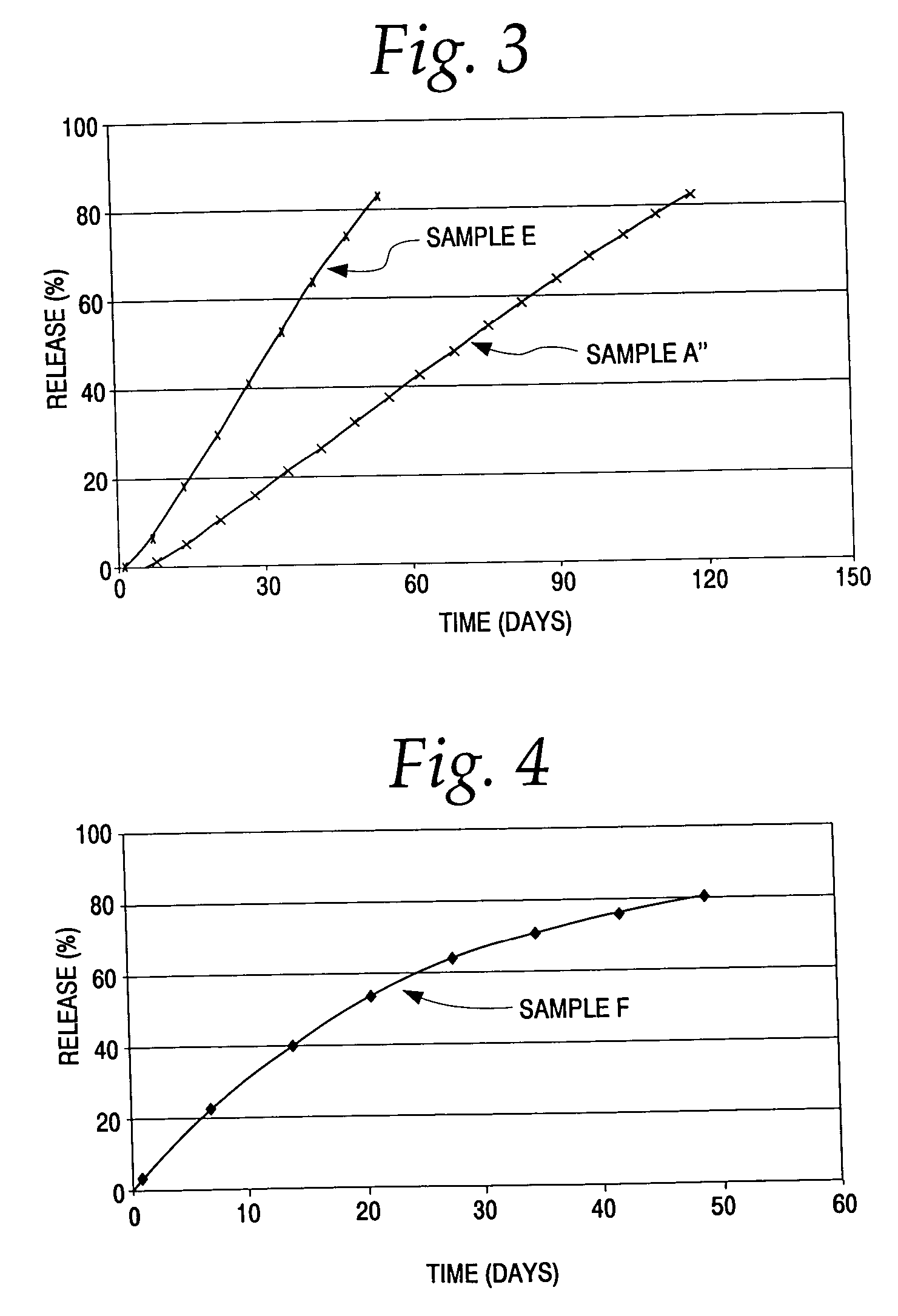Controlled release products and processes for the preparation thereof
a technology of controlled release and products, applied in the field of controlled release products, can solve the problems of not only inefficient fertilizer use, but also environmental threat, and the availability of too many nutrients can be detrimental to plants, and the delivery of nutrients cannot be achieved
- Summary
- Abstract
- Description
- Claims
- Application Information
AI Technical Summary
Benefits of technology
Problems solved by technology
Method used
Image
Examples
example 1
[0076]A series of test sample granular NPK fertilizers was prepared from fertilizer granules having an average diameter of 3 mm (i.e., 0.003 meters) and a composition of 17 wt. % N, 10 wt. % P2O5, and 13 wt. % K2O. Furthermore, micronutrient trace elements (Fe, Mn, Zn, Cu, B and MgO) were present in the granules. These fertilizers particles are denoted herein as 17−10−13+.
[0077]The series of test samples was prepared from these fertilizer granules by placing the granules in a pilot rotating drum coater and heating the granules to a temperature of 80° C. After heating, separate solutions of coating resins (hereinafter designated as Resin A, Resin B and Resin C), in white spirit, were added to separate batches of heated granules by applying one of the separate resin solutions onto the rotating bed of granules. This addition of each of these resins was continued until a coating thickness of 33 μm was obtained on each of the coated particle samples. After coating, the fertilizer granule...
example 2
[0082]The fertilizer products designated Sample A, Sample B and Sample C produced in accordance with the procedure described in Example 1 above were analyzed according to the so-called waterleach test at 21° C. For the waterleach test, 20 g samples of coated fertilizer were placed in 400 ml of water at 21° C. At certain time intervals the conductivity of the solution was measured and the water replaced by fresh water. Based on the measured conductivity the concentration of nutrients was calculated using appropriate calibration constants. These calibration constants are specific for a certain type of fertilizer and need to be determined experimentally. Alternatively, the release of nutrients can be determined by measuring the amount of nutrients present in the water by using standard chemical analytical methods.
[0083]The cumulative release curves of the sample fertilizer products Sample A, Sample B and Sample C from Example 1 are illustrated in FIG. 1 wherein the longevity of the CRF...
example 3
[0085]This Example illustrates two types of semi-permeable coatings (thermosetting and thermoplastic) which may be employed in accordance with this invention to produce fertilizer products.
[0086]In Table 2, two resins designated Resin D and Resin E are shown with their corresponding WVTR (determined as described in Example 1). Resin D comprises an alkyd modified with (hydrophilic) silicone segments (a commercially available coating composition sold by Blagden Chemicals Ltd. under the trade name Blagden 1508) and Resin E comprises a copolymer based on ethylene and vinylalcohol (CAS Registry Number [25067-34-9]).
[0087]
TABLE 2Coating materialTypeWVTR (g ·μm / m2 · day)Resin DSilicone-modified alkyd1800Resin EPoly(ethylene / vinylalcohol)1500
PUM
 Login to View More
Login to View More Abstract
Description
Claims
Application Information
 Login to View More
Login to View More - R&D
- Intellectual Property
- Life Sciences
- Materials
- Tech Scout
- Unparalleled Data Quality
- Higher Quality Content
- 60% Fewer Hallucinations
Browse by: Latest US Patents, China's latest patents, Technical Efficacy Thesaurus, Application Domain, Technology Topic, Popular Technical Reports.
© 2025 PatSnap. All rights reserved.Legal|Privacy policy|Modern Slavery Act Transparency Statement|Sitemap|About US| Contact US: help@patsnap.com



